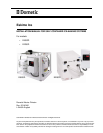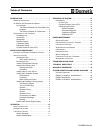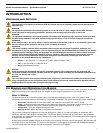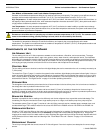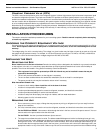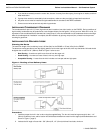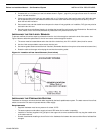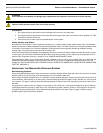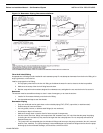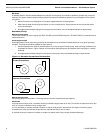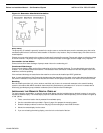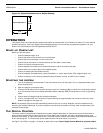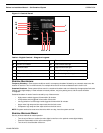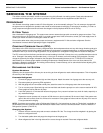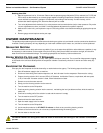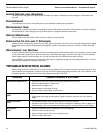
INTRODUCTION Eskimo Ice Installation Manual - Self-Contained System
2 L-2448A ENGLISH
The Effect of Seawater and Fresh Water Temperatures
Seawater and freshwater temperatures affect the ice machine’s efficiency and capacity. The system is most efficient when the
seawater and fresh water temperatures are 55-80°F (13-27°C). The ideal temperature for both is 70°F (21.1°C).
High Temperatures - As water temperatures approach 90°F (32°C) and above, the water’s ability to absorb heat diminishes, so
the capacity of the system decreases. Also, when seawater temperature increases above 90°F (32°C), the system could sustain
a high-pressure shutdown to protect the compressor.
Low Temperatures - As water temperatures approach 40°F (4.4°C) and below, the water’s ability to provide heat exchange
diminishes, so the capacity of the system decreases. Also, as the water temperature decreases, the system could sustain a low-
pressure shutdown to protect the compressor.
The Effect of Ambient Air Temperature
The ambient air temperature affects the ice machine’s efficiency and capacity, but not as significantly as the water
temperatures. The system is most efficient when the ambient air temperature is 55-80°F (13-27°C). At temperatures above and
below this range, ice production will decrease.
COMPONENTS OF THE ICE MAKER
ICE-MAKING UNIT
The ice-making unit has an R-134a compressor, seawater-cooled condenser, a filter/drier, and an accumulator. The auger
assembly contains the evaporator barrel, auger rotor, gearbox, motor, water reservoir, and expansion device. The freshwater
delivered to it is converted to ice which exits the system via an ice-delivery hose routed to a storage box up to 30 feet (9m) away
for the EI600D and EI500D or 15 feet (4.5m) away for the EI250D.The unit is pre-charged with refrigerant from the factory. The
unit has plug-and-play electrical connections for the ice-level sensor and the optional remote display.
CONTROL BOX
The ice-making unit has an electrical control box with digital display that can be mounted on the unit or remotely mounted up to
7’ (2.2m) away.
The control box (Figure 7, page 11) contains the system function switches, digital display, and system indicator lights. It lets you
control all system operations and provides visual indications of system activity, such as whether the system is running or has a
fault. If a fault condition is detected, the system shuts down automatically. The control panel lets you restart the system after a
sustained fault. See the “The Digital Control” on page 10 for further operating instructions.
STORAGE BOX
The storage box is the destination point where the ice will accummulate via the ice-delivery hose. An ice-level sensor installed in
the storage box halts ice production when the box is full.
The storage box should be able to hold water and have at least 2" (51mm) of insulation to keep the ice frozen as long as
possible. It is helpful to install a drain in the box at the end opposite from the ice input. To improve ice-production performance,
keep the drain plugged to prevent cold air and cold water from escaping the storage box.
SEAWATER SYSTEM
Seawater is pumped into the ice-making unit to efficiently cool the hot refrigerant via a cupronickel coaxial tube design. The
condensing unit may be connected to its own single-station pump or to a larger, multi-station pump via a pump relay box.
The seawater system (Figure 3, page 7) consists of a thru-hull fitting, seacock, strainer, seawater pump, seawater hose, and
overboard discharge. There must be water flow of at least 2.5 GPM for the EI600D unit and 1.25 GPM for the EI250D unit.
FRESHWATER SUPPLY
Use the 1/4" SAE male flare fitting on the auger unit to supply freshwater for ice making. Provide water with pressure of at least
15 PSI. An in-line water filter (included in kit) is mandatory to comply with Dometic Warranty Regulations, to help prevent
clogging of the needle valve in the water reservoir, and to help keep the auger walls from fouling with mineral deposits which will
cause premature failure of water seals and bearings. See “Fresh Water Filter and Y Strainer” on page 13 for maintenance
instructions.
REFRIGERANT CHARGE
The unit is pre-charged with the correct amount of R-134a refrigerant. If service is required, see data plate for correct charge
amount.
CAUTION
Extreme care should be taken in operating any unit below seawater temperatures of 40°F (4.4°C). The seawater could
freeze in the condenser tubing, possibly causing it to burst, which is not covered by the warranty.



